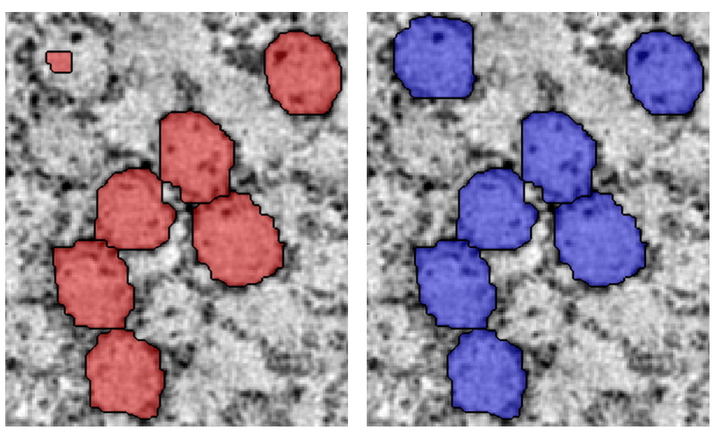Non-deep Learning based Segmentation Approaches
We have worked on a number of different general methods for image segmentation based on convex relaxations ( [zach09a]
[zach09b]
). We have also devised segmentation methods for the segmentations of fiber bundles from diffusion weighted images ( [niethammer09]
) and to extract connectivity information from diffusion tensor images ( [niethammer10]
). For the segmentation of biological structures it is often know a-priori how large a particular object should be. We have therefore explored a segmentation method which can impose constraints on the segmentation area ( [niethammer13]
).
Multi-atlas Segmentation
We developed multi-atlas segmentation approaches for knee cartilage ( [shan14]
) and have most recently explored deep-learning approaches to predict the trustworthiness of individual atlases for multi-atlas segmentation approaches ( [ding19]
).
Image Segmentation via Deep Learning
As one of our main research directions is image registration, we are exploring image segmentation approaches based on deep-learning which can benefit from our fast deep-learning registration approaches. This has led us so far, for example, to an approach for joint segmentation and registration ( [xu19]
) as well as to a segmentation approach based on data augmentation at test time ( [shen20]
).
References
